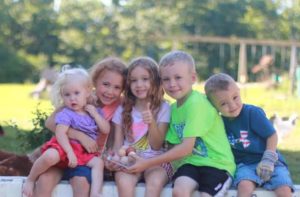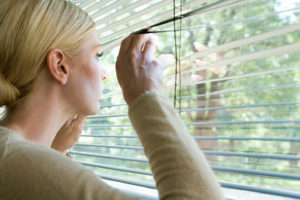‘I had to get out of the public system.’ Why are some of homeschooling’s biggest advocates former public-school teachers?
Since the COVID-19 pandemic, former public school teacher Kellista Keaton has helped colleagues leave for educational alternatives such as homeschooling and micro-schools.
“They stepped away from…

Since the COVID-19 pandemic, former public school teacher Kellista Keaton has helped colleagues leave for educational alternatives such as homeschooling and micro-schools.
“They stepped away from their job, and I’ve been mentoring them,” said Keaton, owner of The Little Green Schoolhouse in Olathe, Kansas. “It’s interesting that we’re going back to that one-room schoolhouse model that used to be nationwide, that used to support communities and their individual needs, so I love seeing that.”
As U.S. teachers continue leaving their professions in record numbers, several have turned to homeschooling or other alternative models – many once they began having their own children.
They cite a combination of factors making public education undesirable, including an overemphasis on testing, problematic environments, and unsupportive administrators.
“We kept hearing the pendulum will swing back, play will come back, hang in there,” said Keaton, who left her teaching position in 2013. “A lot of teachers weren’t leaving the profession then, but I just had this sense of urgency that I had to get out of the public system.”
Overemphasis on testing
Many teachers mention public schools’ growing emphasis on testing as one reason they decided to leave.
“God was preparing me to be a homeschooler because He knew that the gifted daughter I would eventually have eight years later would never thrive in a traditional classroom,” wrote Sallie Schaaf Borrink on her blog.
Borrink, a former schoolteacher, now runs her own website that sells homeschooling resources.
“I am thoroughly convinced that the pressure of testing would be completely wrong for her and our family,” she wrote.
One of Borrink’s colleagues likened teachers to an “indicator species,” a biological term where scientists monitor a certain species whose changing behavior may reveal something is changing in the environment.
“When the teachers start leaving their chosen profession to homeschool their children, people need to take notice that something truly is seriously amiss,” Borrink wrote. “I think this teacher is correct that these talented, dedicated teachers who become homeschoolers are the indicator species and they are speaking loudly and clearly about the health of the educational environment.”
Like Borrink, Keaton also noticed an emphasis on testing even as early as kindergarten and first grade.
“They’d taken play out of the classroom,” she said. “We were pushed to do testing with kids constantly.”
Furthermore, Keaton said, administrators were deciding teacher salaries on testing metrics and whether students had reached certain reading levels by the middle and end of the school year.
“I just didn’t think that was fair to teachers, it wasn’t fair to kids, that my pay and my review was going to be based on me pushing a kid to do things they weren’t ready to do,” she said.
Unmet needs for students, teachers
Keaton also struggled with trying to help children with special needs who weren’t getting the support they needed from administrators.
“I had a principal that was not supportive at all with anything that I did alternatively, so everything I wanted to do he said no to,” she said. “You can’t let the kids play outside. You can’t do nature walks. You can’t do journals unless they were academic – they can’t have fun free-time journals. Just insane.”
At the same time, Keaton began researching childhood development and alternative educational methods. She read Chris Mercogliano’s Teaching the Restless book, which detailed one educator’s approach to teaching children who had behavioral issues and ADHD diagnoses in the 1970s.
“It changed these kids’ lives,” Keaton said.
When Keaton’s daughter turned 3, she was exhibiting many of the behaviors Keaton saw at school that tended to result in ADHD diagnoses.
“I saw all these special-needs kids in my building who were playing in corners and having meltdowns, and going to the padded room, and screaming under the table and throwing things, and I thought, ‘This will be my kid,’” she said. “She’ll be labeled as this horrible child just because she would hate this environment.”
As Keaton learned more about sensory processing disorder and autism, a friend recommended she place her daughter in a play-based preschool. She also began researching Reggio Emilia, Waldorf, Montessori, project-based and community-based educational approaches.
“I had never heard any of these education terms as a teacher,” she said.
Keaton’s research spurred her to open her own child-led preschool, where she saw firsthand how behavioral issues disappeared as children responded to their new environment.
“If you set up this environment that nurtures wonder and nurtures questions and play, which is how children learn – we’ve forgotten that – you don’t have to do much else,” she said. “They begin to drive it.”
Keaton’s preschool has now been in operation for 9 years. She also obtained a master’s degree in early childhood education in 2018, then became a published author in 2020.
“You couldn’t pay me to go back to the public system and torture kids,” she said. “Once you discover this world where kids really learn even more than they’re learning in a public setting, why would you go back?”
From teacher to homeschooler
At first Keaton never expected to homeschool her children. She’d wanted to be a teacher since she was a little girl, she said.
“I just loved all of my classroom experiences, loved everything about the public school system, had a very idyllic view of my own education,” she said. “I was that one kid that was very studious and loved learning – still do.”
However, once Keaton obtained her teacher’s license from Ottawa University in 2010 and began teaching, she found the environment had changed.
“It was overwhelming to me how awful the curriculum was, and how much the administration pushed for kids to be on meds and pushed for ADHD diagnoses in kindergarten and first grade, even though I was told in my whole program we can’t diagnose,” she said. “It was very weird.”
After her child turned 3, Keaton’s views on homeschooling began to change.
“I started to kind of question my love for public school, and I felt God really whispering to me to look into homeschool,” she said. “I thought, ‘That’s crazy. I think homeschoolers are awful. Why would I do that?’”
Now that she homeschools her children, Keaton said, she had to unlearn common misconceptions – including homeschooling and socialization.
“I laugh at that really hard, because as a teacher, if I were given a dollar every time I said, ‘You’re not here to socialize,’ I could retire,” she said. “Because that’s a teacher motto: ‘You’re not here to socialize. Stop talking to your neighbor.’”
The only times to socialize in a traditional classroom, Keaton said, come down to a 20-minute lunch period and two 15-minute recesses, or less than 1 hour a day.
“I knew a lot of kids who felt isolated in my classrooms, and I don’t know one kid in my program that feels isolated,” she said. “It’s really interesting to me that people think that public schools are social areas, because they’re not at all.”
‘Schools need to push back’
Keaton has been mentoring other former schoolteachers to set up micro-schools in houses or other locations in the KC metro area. Together they discuss the business side of teaching, including classroom setup, advertising and legal matters.
She encourages any teachers who aren’t yet ready to leave public school to continue advocating for children.
“Be the voice, in the school, of reason,” she said. “Talk to your administrator, talk to the board. Go to the meetings, go to the school district and talk with other parents who know and support more play in the classroom.”
Keaton is also pushing for Kansas to recognize project-based educational models as they continue to grow in states such as Colorado, New Jersey, New York, Oregon, and Washington.
“We still think there’s a one-size-fits-all education model,” she said. “The answer doesn’t have to be to homeschool – I am all for school choice – but I really feel like schools need to push back. They need to be more project-based.”



